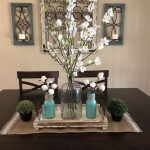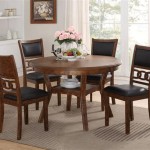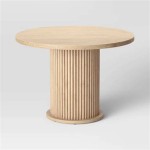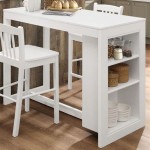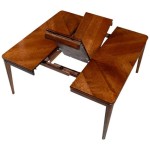The Practical and Aesthetic Benefits of Under Dining Room Table Rugs
A dining room rug placed beneath a dining table is more than just a decorative element; it serves a variety of functional and aesthetic purposes. Selecting the appropriate rug for this high-traffic area requires careful consideration of size, material, color, and style. The aim is to enhance the room's overall design while providing practical benefits such as noise reduction, floor protection, and improved comfort.
The practice of using rugs in dining areas has evolved over time. Historically, rugs were often symbols of wealth and luxury. Today, they are accessible to a broader range of consumers and are valued for their ability to define a space and complement existing décor. As interior design trends shift, dining room rugs continue to adapt, incorporating new materials, patterns, and technologies to meet the evolving needs of homeowners.
Defining the Dining Area and Creating Visual Harmony
One of the primary functions of a rug under a dining table is to visually define the dining area, especially in open-concept homes. A rug acts as an anchor, clearly demarcating the dining space from adjacent living areas or kitchens. This is particularly important in rooms where boundaries are less defined by walls or architectural features.
The visual impact of a dining room rug extends beyond simply defining the space. It also plays a significant role in creating visual harmony within the room. The rug can tie together various elements of the décor, such as the dining table, chairs, and wall colors. By selecting a rug that complements the existing color palette and style of the room, it is possible to create a cohesive and aesthetically pleasing environment. Patterns and textures can add depth and interest, preventing the space from feeling monotonous or bland.
When selecting a rug for visual harmony, consider the following: The rug's color should either complement or contrast intentionally with the surrounding furniture and walls. Patterns should be chosen to either enhance or balance existing patterns in the room. The rug's texture should add tactile interest, creating a more inviting and comfortable atmosphere. The rug should be appropriately sized to accommodate both the table and chairs, ensuring a balanced visual appearance. Too small a rug can make the dining area feel cramped and disjointed, while too large a rug can overwhelm the space.
Protecting Floors and Reducing Noise
Beyond aesthetics, a rug provides crucial floor protection in the dining area. Dining rooms are often high-traffic zones, prone to spills, scratches, and dents. A rug acts as a buffer between the furniture and the floor, minimizing the impact of chair legs and dropped items. This protective layer is particularly important for delicate flooring materials such as hardwood, tile, or laminate, which can be susceptible to damage.
The benefits of floor protection extend beyond preventing visible damage. A rug can also help to insulate the floor, reducing temperature variations and creating a more comfortable environment. This is especially beneficial in homes with concrete or tile flooring, which can be cold to the touch during cooler months. By providing a layer of insulation, a rug can help to regulate the room's temperature and improve overall comfort.
Another significant advantage of using a dining room rug is its ability to reduce noise levels. Hard surfaces like wood and tile tend to amplify sound, creating echoes and increasing ambient noise. A rug absorbs sound waves, minimizing reverberation and creating a quieter, more peaceful atmosphere. This is particularly important in dining areas, where conversations and the clatter of dishes can contribute to a noisy environment. The use of a rug can significantly improve the acoustics of the room, making it a more pleasant space for dining and socializing.
To maximize floor protection and noise reduction, consider the following: Choose a rug with a supportive backing to prevent slippage and provide extra cushioning. Select a material that is durable and resistant to stains, such as wool or synthetic fibers. Consider using a rug pad underneath the rug to provide additional cushioning and protection. Regularly clean the rug to remove dirt and debris, preventing it from scratching the floor.
Choosing the Right Size, Material, and Style
Selecting the right size rug is crucial for both aesthetics and functionality. A rug that is too small can make the dining area feel disjointed and cramped, while a rug that is too large can overwhelm the space. The general rule of thumb is to choose a rug that extends at least 24 to 36 inches beyond the dining table on all sides. This allows chairs to be fully pulled out without falling off the edge of the rug.
The shape of the rug should also complement the shape of the dining table. A round table typically works best with a round or square rug, while a rectangular or oval table is well-suited to a rectangular or oval rug. However, these are not hard and fast rules, and experimentation can lead to unique and visually appealing results.
The material of the rug is another important consideration. Wool is a popular choice for dining room rugs due to its durability, stain resistance, and natural beauty. Synthetic fibers such as nylon and polypropylene are also excellent options, offering similar benefits at a lower cost. Jute and sisal rugs provide a natural, textured look but may be less stain-resistant and more difficult to clean. Cotton rugs are soft and comfortable but may not be as durable as other materials.
The style of the rug should complement the overall décor of the dining room. A traditional dining room might benefit from an Oriental rug or a rug with a classic pattern, while a modern dining room might be better suited to a rug with a geometric design or a solid color. It is important to consider the color palette, patterns, and textures of the rug in relation to the other elements in the room, such as the furniture, walls, and accessories. The rug should enhance the overall design and create a cohesive and harmonious environment.
When choosing the right size, material, and style, consider the following: Measure the dining table and the surrounding area to determine the appropriate rug size. Choose a material that is durable, stain-resistant, and easy to clean. Select a style that complements the overall décor of the dining room. Consider the color palette, patterns, and textures of the rug in relation to the other elements in the room. Take into account the level of foot traffic and potential for spills when selecting the material and style of the rug. Use a rug pad to provide additional cushioning, protection, and stability.
The color of the rug is another crucial aspect. Darker colors tend to hide stains and dirt better than lighter colors, making them a practical choice for a dining area. Patterns can also help to disguise spills and wear. However, lighter colors can brighten up a room and create a more spacious feel. When choosing a color, consider the overall lighting of the room and the existing color palette. The rug should complement the other colors in the room and create a visually appealing contrast or harmony.
Ultimately, selecting an under dining room table rug involves balancing functional requirements with aesthetic preferences. Understanding the various benefits and carefully considering factors such as size, material, and style will ensure the chosen rug enhances the dining experience and contributes to a well-designed and comfortable home.

What Size Rug Under Dining Table Here S The Best Way To Find Righ

Should You Put A Rug Under Dining Table Furniturebox Uk

Simple Rules For Dining Room Rugs Floorspace

Should You Put A Rug Under Dining Table Furniturebox Uk

How To Choose A Family Friendly Dining Room Rug

The 14 Best Boho Dining Room Rugs Of 2024

Dining Room Rugs Area For Under Table

20 Best Dining Room Rugs 2024 S Top Picks

Rules Of Thumb For Rugs Under Round Dining Tables Inspiration

10 Tips For Getting A Dining Room Rug Just Right Nz


